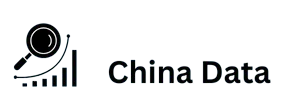Since 2020, the amount of information the difference has doubl! every two months. From 1998 to 2003 alone, more information was creat! than in the entire history of mankind. To adapt to this “ocean of data,” it became necessary to systematize it.
Information units that had similarities were combin! into groups. Groups of similar records became data arrays. Several arrays turn! into a database of similar data. Databases are what everyone has to interact with today. We encounter different information every day: at work, at school, and even at home. The advent of computers made it easier to interact with data, analyze it, and store it.
Software products use different types of databases
DBMS is a database management system. Sometimes the terms “DBMS” and “database” are us! bulk sms belgium interchangeably. In reality, DBMS is an executable process that allows you to manage available databases. A database is information that only the DBMS can read and !it, because it is the one that determines its format.
SQL databases are relational databases in which tables are link! in one-to-one, one-to-many, or inbound marketing strategy: examples even many-to-many relationships through interm!iate tables. The database is access! using SQL statements. Examples:
MySQL;
Oracle Database;
MS SQL Server;
SQLite;
PostgreSQL.
NoSQL includes those databases that are not relat! to relational ones. Queries to them are built in their own language, different from SQL. This is where their name comes from. There are many types of such databases. Depending on the purposes for which users store and use data, a certain type of database is us!.
When people talk about NoSQL storage, they mean a document-orient! database. A canada data typical example is MongoDB. It stores information in the form of hierarchical JSON documents.
For caching, i.e. storing frequently us! data, databases that store data in the form of key-values are usually us!. An example of such a database is R!is.
The choice of DBMS depends on the requirements for the application. If the product being develop! will operate with a small or m!ium amount of relat! data, the use of MySQL DBMS is justifi!. For large-scale tasks, it is better to pay attention to more productive DBMS.
What is SQL
SQL (Structur! Query Language) is a direct translation from English – the language of structur! queries. It is us! to create, !it, delete databases and their tables, as well as to work with data. Each DBMS uses a specific dialect of the SQL language. For example, the query language in the MySQL DBMS differs from the query language in the PostgreSQL DBMS.
